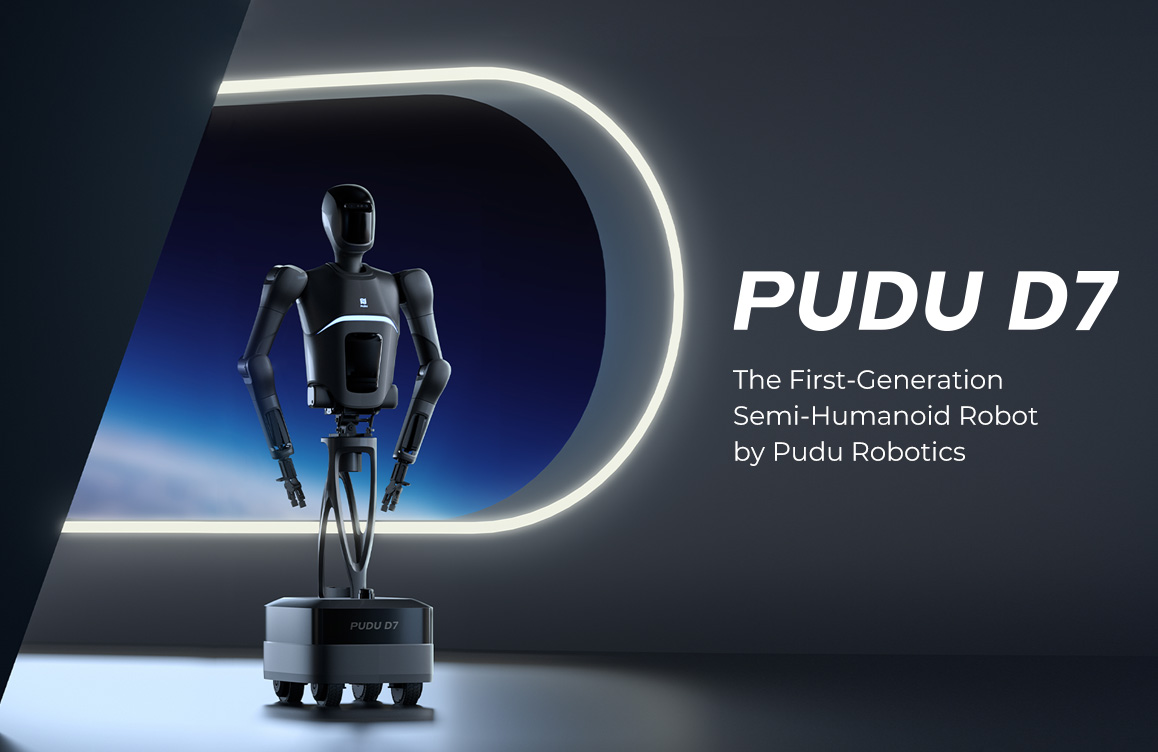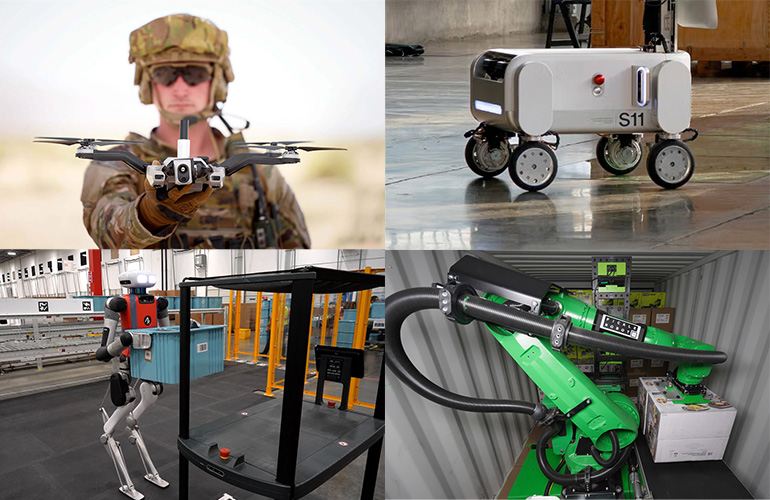PUDU D7, a first-generation semi-humanoid robot, is built to adapt to varied applications. | Source: Pudu Robotics
Pudu Technology today unveiled its latest service robot, the PUDU D7. It is the company’s first “semi-humanoid robot,” a term it introduced earlier this year. Pudu said it expects to fully commercialize the robot in 2025.
“We are excited to introduce the PUDU D7, which highlights our commitment to continuous technological and product innovation,” stated Felix Zhang, founder and CEO of Pudu Robotics. “Featuring advanced mobility, versatile operational capabilities, and embodied intelligence, this semi-humanoid robot marks a significant milestone in our pursuit of a diverse range of robotic solutions.”
“By advancing a comprehensive ecosystem of specialized robots, semi-humanoid robots, and humanoid robots, we aim to shape the future of the service robotics industry and deliver exceptional value across various applications,” he continued.
Pudu’s existing product portfolio is mostly made up of service robotics, where it claimed to have deployed more than 80,000 units to retail, dining, hospitality, healthcare, entertainment, and education customers.
More recently, the Shenzhen, China-based company has released industrial-strength cleaning robots. Pudu claimed that it holds nearly 1,000 authorized patents worldwide, encompassing a range of core technologies.
What is a semi-humanoid robot?
In April, Pudu Robotics introduced the semi-humanoid concept as part of its long-term strategic vision for the service robotics industry. The company defined this category of robots as sitting between its specialized robots developed for specific tasks and fully humanoid robots that it said are best for complex human-machine interactions.
Pudu asserted that each of these robot types addresses different needs within the service sector. Together, specialized, humanoid, and semi-human robots can enhance operational efficiency and the customer experience, it said. The company noted that its strategy could lead to a future where robots can perform a wide range of tasks across various environments.
The PUDU D7 integrates advanced mobility and dexterity by combining a human-like upper body with robotic arms, and a fully omnidirectional chassis. The company asserted that this design allows it to operate in environments ranging from service-oriented spaces to industrial settings, making a significant step towards adaptable robots for multiple industries.
Pudu isn’t the first company to try to harness the flexibility that comes with a humanoid robotic torso while making the robot easier to develop by replacing the robot’s legs with wheels.
In April, Rainbow Robotics unveiled its new RB-Y1 mobile robot, which features a wheeled robot base with a two robot arms on top. The company called this configuration a “bi-manual manipulator.”
Inside the PUDU D7
Developed by Pudu X-Lab, Pudu Robotics’ research and development division, the PUDU D7 stands about 65 in. (165 cm) tall and weighs 99 lb. (45 kg). The robot’s bionic arm extends to around 25.5 in. (65 cm) and operates with 30 degrees of freedom, expanding to 50 degrees with a dexterous hand attachment.
The company said these capabilities allow it to excel in elevator operation, item transport, and sorting tasks.
The PUDU D7 is powered by a battery exceeding 1 kWh, enabling it to operate continuously for over eight hours. It also features 360-degree omnidirectional movement, a maximum speed of 2 m/s (4.4 mph), and maintains stability on slopes up to 10 degrees.
In addition, the PUDU D7’s robotic arms can lift 22 lb. (10 kg), with the end-point precision of each arm reaching 0.1 mm.
Pudu said it has equipped the PUDU D7 with a multi-layered intelligence system designed to merge data-driven embodied intelligence with advanced AI model strategies. By employing a hierarchical control system, often described as “high-level planning” and “low-level planning,” the PUDU D7 can intelligently manage both abstract, strategic tasks and real-time, sensory-based actions.
The company said its layered approach enables the semi-humanoid robot to not only understand and respond to complex service scenarios, but also continuously learn and refine its operations over time.

 2 months ago
64
2 months ago
64










 English (US) ·
English (US) ·